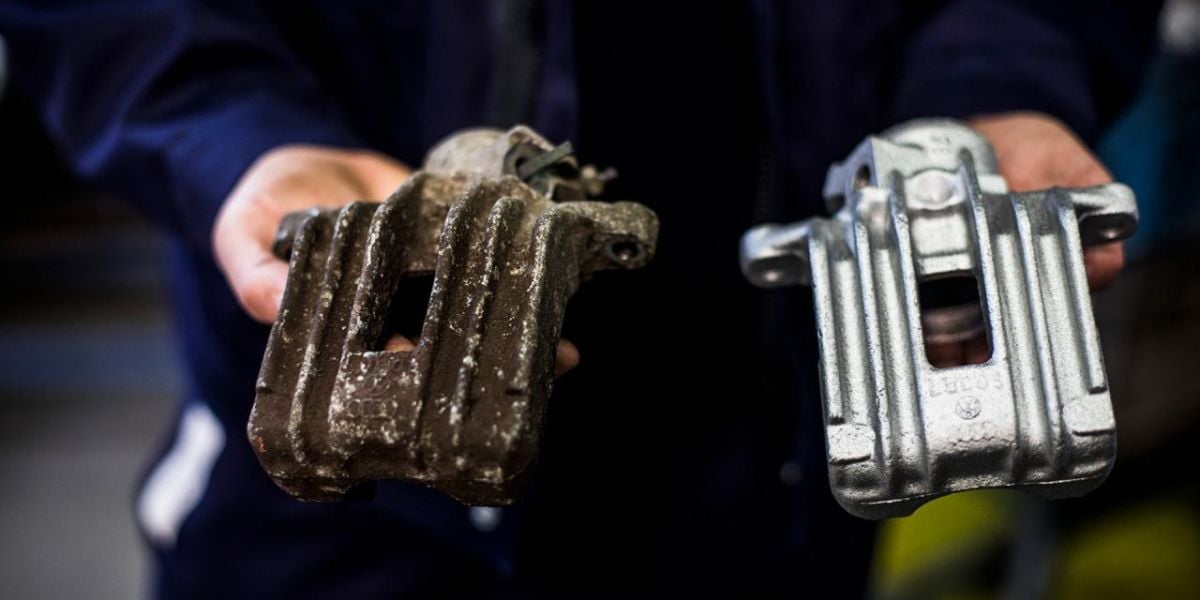Much ado about nothing?
These recent days, there has been persistent circulation of alleged news about a new European regulation on circularity requirements for vehicle design and on management of end-of-life vehicles. According to Isabella Tovaglieri, a Member of the European Parliament from the League (one of the three Italian parties in power), the European Commission would have presented a proposal to mandate the scrapping of end-of-life vehicles (ELVs), even if they are repairable. If this were true, the entire remanufacturing industry would be affected! Traditionally, in the context of the circular economy, the automotive sector has paid particular attention to the recovery of components from used cars, whether for repair or end-of-life (ELV), to prevent pollution resulting from their disposal.
Remanufacturing, the key word
When a component is damaged or at the end of its life, such as engine, transmission, or powertrain components, instead of eliminating it and buying a new component, thanks to the art of remanufacturing, used parts have a second life. The remanufactured components are the same as new or even better because companies incorporate all the engineering upgrades in the new components. There is no difference compared to the genuine parts and it takes 80% less energy to remanufacture a component compared to that used to produce a genuine one, saving up to 30% in costs.
But what is true in all of this?
The proposal, dated July 2023, concerns end-of-life vehicles (ELVs), which are now considered waste and thus no longer repairable. Specifically, the Commission intends to implement measures to improve the "circularity of cars," establishing rules for design, production, and end-of-life treatment while prohibiting the export of vehicles that are no longer fit for international circulation. Among the various initiatives are, for example, clear and detailed instructions for dismantlers on the replacement and removal of components, an invitation to manufacturers to use a higher percentage of recycled plastic (each vehicle must be reusable or recyclable for at least 85% of its mass), the improvement of treatment and collection activities for other materials such as raw materials, steel, or aluminium, a strengthening of responsibilities for manufacturers, increased transparency in inspections, and digital tracking of end-of-life vehicles through a specific passport. In essence, Brussels wants to improve the quality of vehicle collection, treatment, and recycling, so the proposal is aimed at manufacturers, recycling companies, and member states. There are no specific requirements imposed on car owners. The only requirement is to use authorised collection and treatment facilities, which should issue specific scrapping certificates to avoid the phenomenon of "missing vehicles.
Criteria for determination whether a used vehicle is an end of-life vehicle
In the Commission's proposal, criteria are also defined to distinguish an "end-of-life vehicle" from a used vehicle and determine if it is "technically irreparable."
A vehicle is technically irreparable if it meets one or more of the following criteria: it has been cut into pieces or stripped; it has been welded up or closed by insulating foam; it has been completely burnt to the point where the engine compartment or passenger compartment is destroyed; it has been submerged in water to a level above the dashboard; one or several of the following components of the vehicle cannot be repaired or replaced: ground coupling components (such as tyres and wheels), suspension, steering, braking, and their control components; seat fixings and joints; airbags, pre-tensioners, safety belts, and their peripheral operating components; the vehicle's hull and chassis; its structural and safety components have technical defects that are irreversible and turn them non-replaceable, such as metal aging, multiple breaks in primers, or excessive perforating corrosion; its repair requires the replacement of the engine, gearbox, shell, or chassis assembly, resulting in the loss of the vehicle's original identity.
The vehicle is economically irreparable if its market value is lower than the cost of the necessary repairs needed to restore it in the Union to a technical condition that would be sufficient to obtain a roadworthiness certificate in the Member State where the vehicle was registered before repair. A vehicle may be considered technically irreparable when: it has been submerged in water to a level below the dashboard, and damaged the engine or electrical system; its doors are not attached to it; its fuel or fuel vapours are discharged posing a risk of fire and explosion; gas has leaked from its liquid gas system posing a risk of fire and explosion; its operating liquids (fuel, brake fluid, anti-freeze liquid, battery acid, coolant liquid) have been discharged posing a risk of water pollution; or its brakes and steering components are excessively worn. If one of those conditions is met, an individual technical assessment shall be carried out in order to assess if the technical status of a vehicle would be sufficient to obtain a roadworthiness certificate in the Member State where the vehicle was registered before repair.
However, additional criteria that have sparked protests and raised concerns throughout the remanufacturing and aftermarket sectors are misleading (restoration of classic car, restomod, etc.). A vehicle may be considered technically irreparable when it has been submerged in water to a level below the dashboard, and damaged the engine or electrical system; its doors are not attached to it; its fuel or fuel vapours are discharged posing a risk of fire and explosion; gas has leaked from its liquid gas system posing a risk of fire and explosion; its operating liquids (fuel, brake fluid, anti-freeze liquid, battery acid, coolant liquid) have been discharged posing a risk of water pollution; or its brakes and steering components are excessively worn. If one of those conditions is met, an individual technical assessment shall be carried out in order to assess if the technical status of a vehicle would be sufficient to obtain a roadworthiness certificate in the Member State where the vehicle was registered before repair.
Finally, the following criteria may also be used as additional justification to determine if a used vehicle is an end-of-life vehicle: absence of means allowing to identify a vehicle, in particular the Vehicle Identification Number; its owner is unknown; it has not had its required national technical roadworthiness test for more than two years from the date when this was last required; it is not appropriately protected against damage during storage, transportation, loading and unloading; or it was handed over for treatment to an authorised collection point or an authorised waste treatment facility. Having said that, the final decision on whether or not to scrap the vehicle is up to the owner. In any case, for the time being, it is only a proposal that must be examined and approved by Parliament and the Council, and may be amended. Assume that the remanufacturing sector is on high alert: the coming months and future decisions will reveal whether it will be Much Ado About Nothing.



